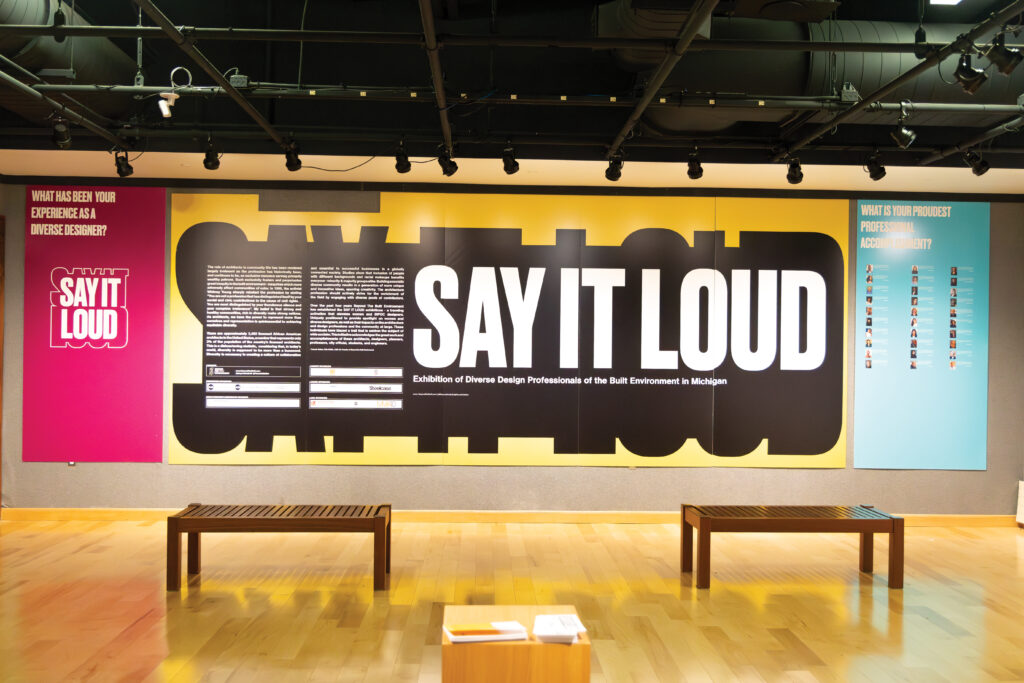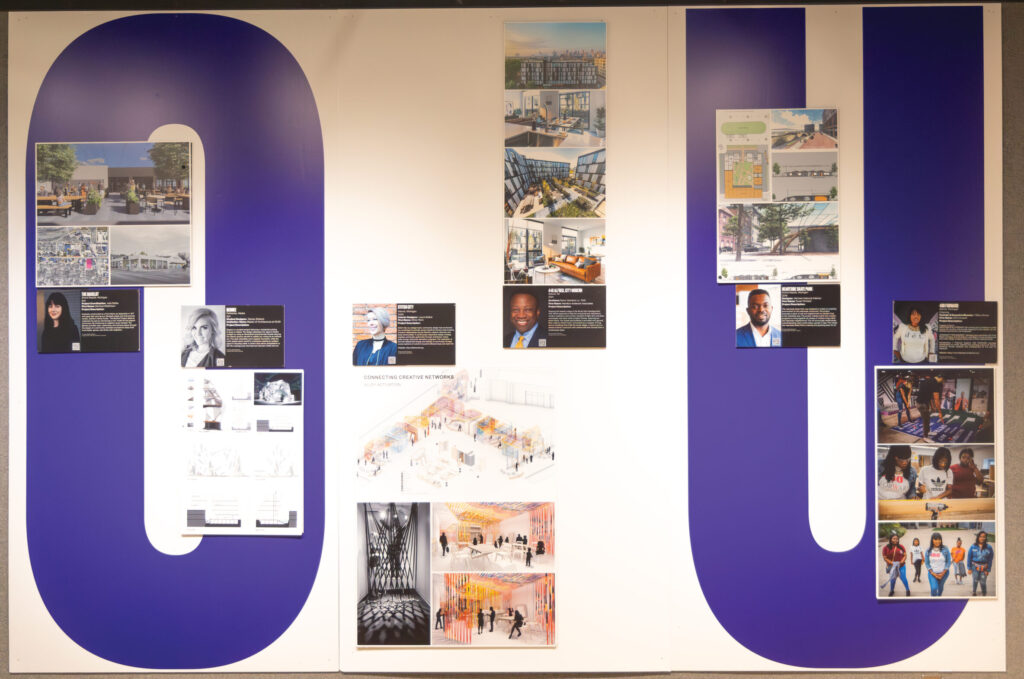The “Say It Loud” exhibit, curated by Beyond the Built Environment, featured projects and perspectives from minority architects and designers, promoting diversity and celebrating their invaluable contributions to the industry.
Through interactive displays, the exhibit educates students and the public on the significance of inclusion, elevating the presence of Black and minority architects in a field where they are underrepresented.

Licensed Black architects, for instance, account for only 1.8% of all architects in the United States—a staggering statistic brought to light by exhibitor Mark Barksdale, a well-known and prestigious architect, when it comes to hotel architecture. His reflections resonate with a clear message on the need for visibility, emphasizing the importance of showcasing their talent.
“Black architects do exist and have made important contributions to the field of architecture, worthy enough for the world to acknowledge,” Barksdale said.
This stark underrepresentation underscores why exhibits like “Say It Loud” matter. They amplify marginalized voices and inspire young people of color to see themselves as future leaders in architecture and design. For students, the exhibit served as a powerful educational tool that extends beyond technical skills and into cultural awareness.
Exhibitor Samantha Josaphat, a practicing architect and interior designer, noted how this exhibit provides students with a lens to understand the intricate relationship between architecture and community, which showed how design can reflect and respect diverse identities.
“The ‘Say It Loud’ exhibition is an elevated platform that has allowed us not only to inform others on how our work has impacted society but also a door to more opportunities to serve as civic leaders globally,” Josaphat said.
This reflected how an architect, often perceived as a solitary or technical profession, has profound implications for cultural diplomacy and societal unity. In addition to highlighting established professionals, “Say It Loud” fosters mentorship connections between seasoned architects and emerging voices in the field.

Nicole Hollant-Denis, an exhibitor and practicing architect and associate architect for the Columbia Business School, shared how the exhibit has enabled her to connect with young architects, a chance she rarely found time for while running her practice.
“The exhibit also allowed me to connect with colleagues and see some of their accomplishments,” Hollant-Denis said.
This networking aspect not only bolsters professional support but serves as an invaluable opportunity for students to envision themselves in these roles, fostering a sense of belonging in the industry.
The exhibit’s impact on society was profound. It redefined traditional narratives in architecture by emphasizing that minority architects are not only shaping buildings but creating spaces that resonate with cultural identity.
Architect of 25 years Abhay Wadhwa recalled the absence of role models with similar backgrounds. Now, initiatives like “Say It Loud” provide essential platforms for sharing and networking, filling a void in representation and offering younger generations access to mentors who can guide them.
“As a professional and immigrant of color, my professional journey has been exciting and blessed,” Wadhwa said.
Architectural professor at Parsons School of Design and exhibitor Yolande Daniels discussed the exhibit’s influence on her practice, particularly the media exposure from publications like “Curbed,” which brought renewed visibility and work opportunities for her firm.
“The higher profile has seemed to elevate the visibility of our firm,” Daniels said.
Daniels observed how recognition through this exhibit can tangibly impact minority-owned practices, encouraging a more diverse range of voices to thrive in architecture.
Overall, “Say It Loud” challenged the traditional perceptions within architecture, urging a collective re-evaluation of what it means to be a designer in a multicultural society. For Ferris students, the exhibit is more than just a display; it’s an invitation to appreciate the role of diversity in design and recognize architecture as a medium that can foster inclusion.
Through “Say It Loud,” students not only witness the contributions of Black and minority architects but are also inspired to carry these values of equity and representation into their future careers, helping to shape an architectural landscape that mirrors the world’s diversity around us.
In a powerful reflection, Richard Franklin, who worked at the September 11 Memorial Museum, which sits at the World Trade Center site, helped capture the broader mission of the exhibit.
“‘Say It Loud’ was and is an important exhibit of architects and their work,” Franklin said. “It exposed to the building community, specifically, and the public in general, the diverse and amazing design skills of members of the National Organization of Architects.”
As the “Say It Loud” exhibit continues to tour, its presence at Ferris marked a pivotal moment in the journey toward a more inclusive architectural community, where every aspiring architect can see themselves represented and valued.
The exhibit stands as a powerful reminder that architecture, at its best, is not only about creating spaces, but also about building a society that celebrates every voice within it.
